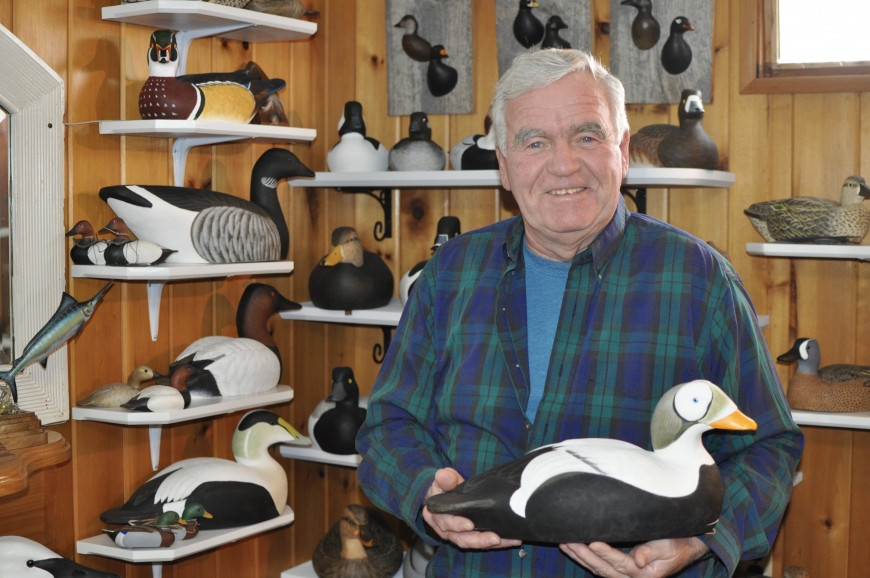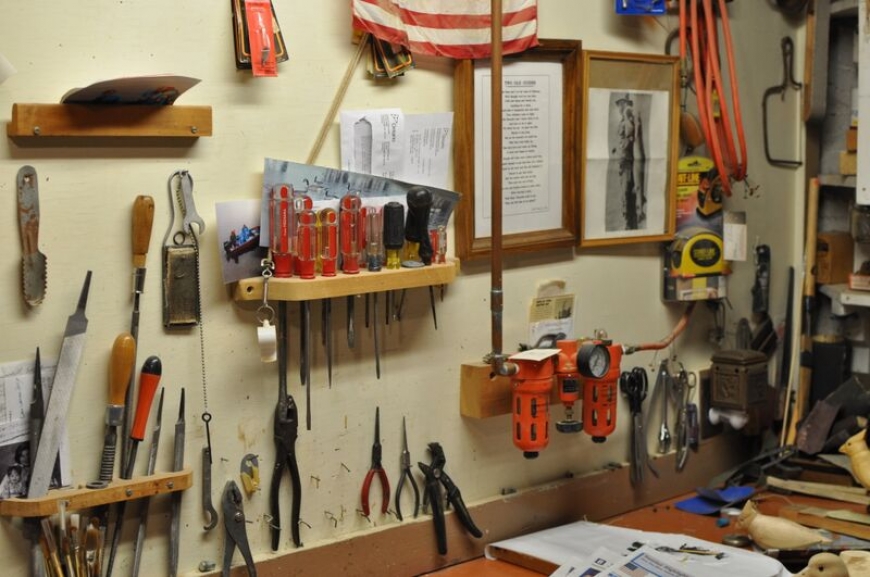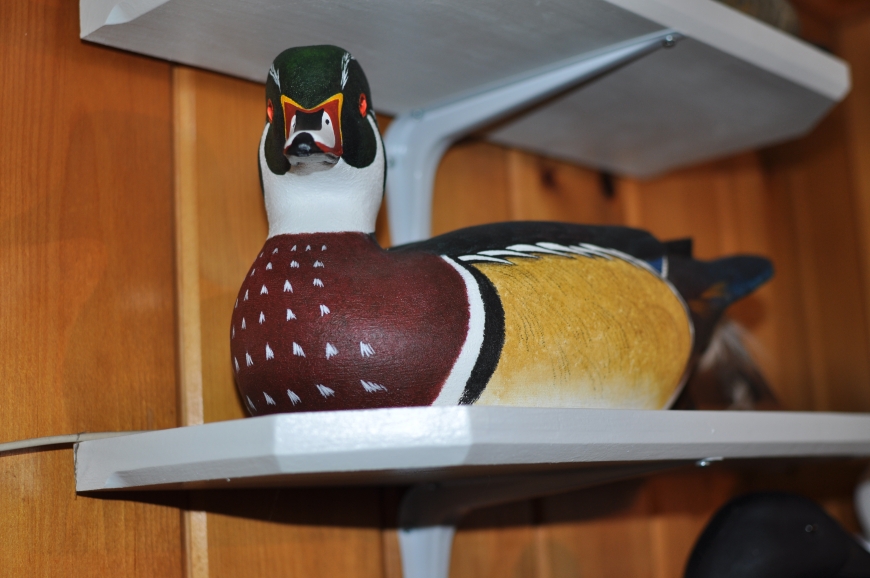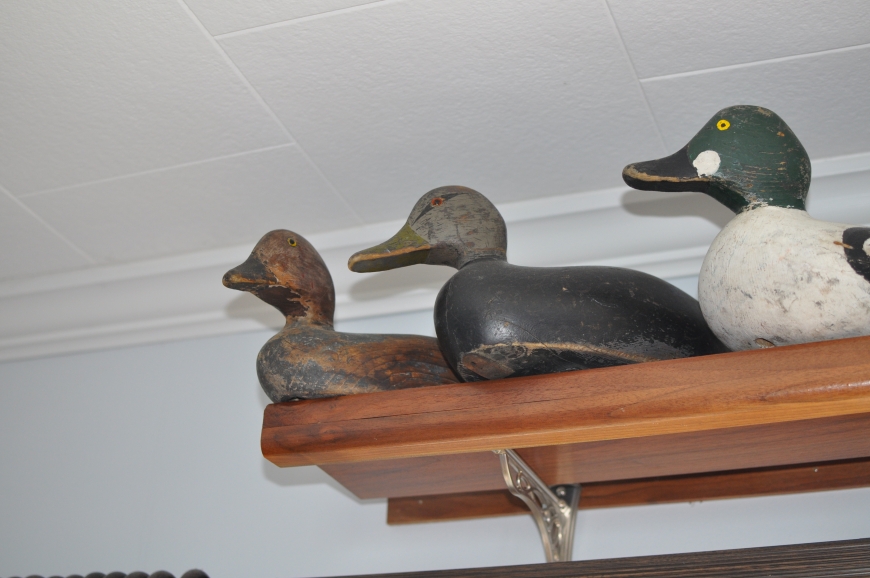







North Country Voices: Bill (Dick) Hollis
Bill (Dick) Hollis has been a duck decoy carver in the Ogdensburg area for over 50 years. Hollis first learned to carve from his father, and has now won numerous awards for his work. He estimates he has made 1500-2000 decoys throughout his life. Despite technological innovations, Dick is one of few decoy carvers in the North Country that continues to carve with hand tools. We caught up with Dick to learn more about his craft.
Nature Up North: Tell us about the Hollis business.
Dick Hollis: I’m not sure you’d even call it a business, but my craft is decoys. My dad made decoys. He taught all of us how to make decoys when we were younger. I just happened to be the one that pursued it the most and I’ve been doing it for over 50 years. I say it’s a craft. Maybe you can call it a hobby, but that’s just part of my life too. I enjoy doing it. I’ve progressed though the years and am still doing it as we speak.
NUN: How did your dad get into carving decoys?
DH: Dad, at a young age, was quite artistic. His father, my grandfather, made a few decoys, but he never made many and I understand they weren't very good ones…[My father] started playing around making decoys with a couple local friends of his. At the time in Ogdensburg there were a couple of prominent carvers ... I don't want to say he copied them, but you could tell that he was influenced by them. He just progressed on his own, dad did. He made decoys for a lot of years, from the '30s right up until the late '80s. He made a variety of decoys and for the time and era that dad was doing it, early on, in the prime of his life, he made some really nice, fancy stuff.
Back then, they didn't have the tools that they have today. They didn't have any rotary tools or fancy wood burning stuff. Right up to almost the end, dad made most of them birds when he did the carving part, with a jackknife.
Back then they didn’t have the tools that they have today… dad [carved] most of them birds with a jackknife.
NUN: Has new technology available today taken away from the authenticity of your craft?
DH: You know, depending on how you look at it…I don't believe it's true because the power tools are there, you still gotta be artistic. You gotta be good enough to not take too much wood away. So making the decoy, you have to be awful careful. Even with the new tools, you still have to know what you're doing. But the tools do make it easier. You can do more with these tools. There're so many tools, right from roughing out, down to the finest part. I don't, but some carvers today do their whole decoy, make the whole decoy just with the power tool.
NUN: Is it more time efficient to use the power tools than a hand carving tool?
DH: Oh, there's no doubt about it. When we were young years ago, most everybody that hunted ducks used decoys that either they made or they bought that people made, wooden decoys but today they have the plastic and Styrofoam decoys. They're lighter, they're better, they're more logical. So in today's world, very few people hunt with wooden decoys, homemade style decoys, you know?
We all hunt with our own homemade decoys though. I think we’re probably one of the few left that do that.
When we were young everybody that hunted ducks used decoys that either they made or they bought that people made… today they have plastic and Styrofoam decoys.
NUN: For the decoys, what type of wood do you typically use or prefer?
DH: My personal favorite is pine, local, white pine. It's nice, soft wood. It's light, it sands nice, it smells nice. If I have pine, that's what I'll use, but we have access to so much cedar and basswood and it's pretty cost effective so I make a lot of the birds out of basswood. The hunting decoys that we make for hunting, we still make out of cedar. They always made them out of cedar. It was a lighter wood for hunting. It was better with the weather and still, just like they did 100 years ago, we still make them out of the cedar.
NUN: Have the changing weather patterns affected your craft?
DH: I can't say it's changed my craft. I can say that locally, here, it's changed the duck hunting because for whatever the reason, the ducks don't seem to stay here in this area. When we were younger, there was ducks throughout the duck season, plenty of ducks to be able to go hunt and have a good day of duck hunting, but today, they just seem to bypass this area…
NUN: When do you hunt duck the most and how is that changing?
DH: Ducks are up North and it takes harsh, cold weather to push them down this far. With this easy weather, they don't get froze out way up there until late and when it finally does freeze up, by then our season is just about over with. So that's one of the problems with not seeing many ducks, I guess, which would be connected to this weather change, this warm weather. They're just not here. After hunting season, a week or three weeks after hunting season, you will see some ducks showing up. Right when you can't be out there.
NUN: Is there a quota for duck hunting?
DH: It's a daily limit. It changes year to year, but average… what is it? Four or five, or six maybe, total. If the duck population is down, the limit is less. It might be as little as four or five. If they say it's been a good hatch, they might up the limit one or two more…
NUN: What do you do personally with the ducks after you have one?
DH: We all like ducks. We all like to eat ducks, so we clean them and freeze them and eat them.
You know, one of the reasons I like this area is the four seasons, they work for us.
Nun: And what would you consider your perfect day in the North Country?
DH: You know, one reason I like this area (but we’re brought up here so we don’t know anything different) is the four seasons, they work for us. We hunt in the fall and we fish and hunt in the spring and fall. Wintertime is good for hunting and for my decoy craft. Of course the summer is busy for everything.
In our North Country Voices series, we talk with local residents whose lives intersect with the environment in unique ways. Do you know someone whose work or hobby gives them an interesting perspective on the natural world? Send their name and contact information to info@natureupnorth.org.
This interview was edited by Abby Schlickenmayer. It was originally recorded by SLU students Jayson Leigh & Ryan Orvis in 2017 as part of a "Changing Lands, Living Traditions", a journalistic collaboration between a SLU Environmental Communications course, Nature Up North, and TAUNY (Traditonal Arts of Upstate New York).

